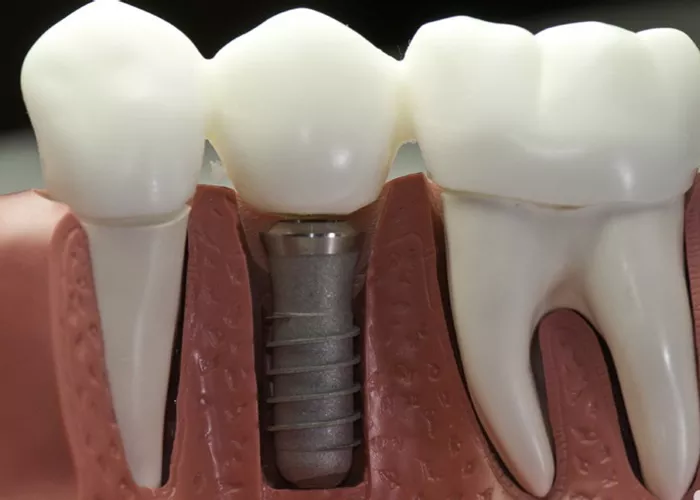Dental implants are a popular and effective solution for replacing missing teeth. They offer numerous benefits, including improved aesthetics, restored functionality, and enhanced oral health. However, dental implants are not immune to complications, and one potential issue that can arise is wobbling or loosening of the implant. Understanding what dental implant wobble means and its potential causes, consequences, and treatments is crucial for maintaining oral health and ensuring the long-term success of the implant.
Introduction to Dental Implant Wobble
Dental implant wobble refers to the movement or loosening of a dental implant within the jawbone. This movement can be subtle or significant, depending on the severity of the issue. Dental implants are designed to be securely anchored within the jawbone through a process called osseointegration, where the bone tissue grows and attaches to the surface of the implant. When osseointegration is successful, the implant becomes a stable and permanent part of the jawbone, allowing for the attachment of artificial teeth or crowns.
However, if osseointegration fails or is compromised, the implant may not be securely anchored within the jawbone, leading to wobbling or loosening. This can occur due to various factors, including poor bone quality, infection, or improper placement of the implant.
Potential Causes of Dental Implant Wobble
There are several potential causes of dental implant wobble, including:
Poor Bone Quality: The success of dental implants largely depends on the quality and quantity of bone tissue available for osseointegration. If the bone tissue is weak or insufficient, the implant may not be able to achieve stable integration within the jawbone, leading to wobbling or loosening.
Infection: Infection is a common complication of dental implants and can disrupt the osseointegration process. If an infection occurs, it can damage the surrounding bone tissue and compromise the stability of the implant.
Improper Placement: The placement of dental implants requires precision and skill. If the implant is not placed correctly, it may not be able to achieve stable integration within the jawbone, leading to wobbling or loosening.
Mechanical Stress: Excessive mechanical stress on the implant, such as from chewing hard foods or grinding teeth, can also cause wobbling or loosening.
Consequences of Dental Implant Wobble
Dental implant wobble can have several consequences, including:
Pain and Discomfort: Wobbling or loosening of the implant can cause pain and discomfort in the mouth, especially when chewing or biting down.
Loss of Functionality: If the implant becomes loose, it may not be able to support artificial teeth or crowns effectively, leading to a loss of functionality.
Increased Risk of Infection: Wobbling or loosening of the implant can increase the risk of infection, as bacteria and plaque can accumulate in the area and disrupt the osseointegration process.
Need for Revision Surgery: In some cases, wobbling or loosening of the implant may require revision surgery to correct the issue and restore the stability of the implant.
Diagnosis and Treatment of Dental Implant Wobble
If dental implant wobble is suspected, a thorough examination and diagnosis by a qualified dentist or oral surgeon is necessary. The diagnosis may involve taking X-rays or other imaging studies to assess the stability and integration of the implant within the jawbone.
Once the diagnosis is confirmed, the treatment options for dental implant wobble will depend on the severity and underlying cause of the issue. Some potential treatment options include:
Antibiotics: If the wobbling is caused by an infection, antibiotics may be prescribed to clear the infection and promote healing.
Implant Stabilization: In some cases, the implant may be stabilized using additional screws or other fixation devices to improve its stability within the jawbone.
Bone Grafting: If the wobbling is caused by poor bone quality, bone grafting may be performed to add additional bone tissue and improve the integration of the implant.
Revision Surgery: In severe cases, revision surgery may be required to remove the implant and place a new one in a more stable position.
Prevention of Dental Implant Wobble
Preventing dental implant wobble involves several steps, including:
Choosing a Qualified Dentist or Oral Surgeon: It is important to choose a qualified dentist or oral surgeon with experience in dental implant surgery for the placement of dental implants.
Maintaining Good Oral Hygiene: Good oral hygiene practices, such as regular brushing and flossing, can help prevent infections and maintain the health of the surrounding tissues.
Avoiding Hard Foods and Grinding Teeth: Avoiding hard foods and grinding teeth can reduce the mechanical stress on the implant and help prevent wobbling or loosening.
Regular Dental Check-ups: Regular dental check-ups can help detect and address any potential issues with dental implants before they become severe.
Conclusion
In conclusion, dental implant wobble is a potential complication of dental implants that can affect their stability and functionality. Understanding the causes, consequences, and treatments of dental implant wobble is crucial for maintaining oral health and ensuring the long-term success of the implant. By choosing a qualified dentist or oral surgeon, maintaining good oral hygiene, avoiding hard foods and grinding teeth, and regular dental check-ups, patients can help prevent dental implant wobble and ensure the long-term success of their dental implants.
Related topics:

